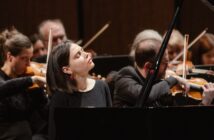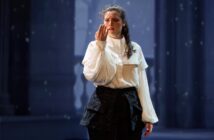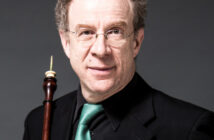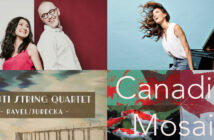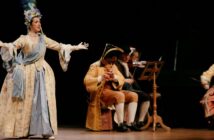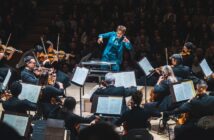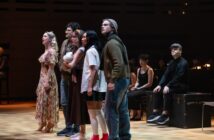FOLIAS ANTIGUAS AND CRIOLLAS: From the Ancient World to the New World
Jordi Savall, viola da gamba and director, Hespèrion XXI and Tembembe Ensamble Continuo (Mexico), Seiji Ozawa Hall, Tanglewood, July 7, 2016
I have always wanted to visit Tanglewood, the prestigious music festival in the lovely Berkshire Mountains of western Massachusetts. What intrigued me mostly was seeing first-hand the unusual idea of combining the Boston Symphony’s summer home together with the Tanglewood Music Center, a music academy which brings student musicians to the festival each summer to train with the players from the orchestra. But the dream of visiting this unusual festival only became a reality this past summer when I discovered that the great Baroque music maestro Jordi Savall was to perform in Seiji Ozawa Hall, perhaps one of the most acoustically perfect concert venues in North America, if not in the world. This was my long-awaited chance.
The Tanglewood idea grew out of the political turmoil of the first half of the 20th century. Both the Russian Revolution and Hitler’s rise to power were responsible for the arrival in the United States of thousands of European exiles driven from their homelands by repressive political regimes.

Serge Koussevitzky conducting the BSO in rehearsal in the Koussevitzky Music Shed at Tanglewood, ca. 1948, Photo: Howard S. Babbitt. ©BSO Archives
One of the most prominent of the newcomers was a double-bass player, the son of two poor Klezmer musicians from a Russian shtetl, who, in 1924, became music director of the Boston Symphony Orchestra. And while the Tanglewood Festival was not strictly speaking Serge Koussevitzky’s invention, he made it what it is today and changed the face of American musical training, despite the fact that he himself was not apparently a brilliant musician. “Such a bad conductor and the orchestra plays so well,” Toscanini supposedly said.
There is no doubt that the new music director was a great organizer and knew how to get things done. Money was needed for a permanent concert hall and the appropriate time for fund raising presented itself at the Wagner concert that opened the Festival’s 1937 season. Rain and thunder twice interrupted the Rienzi Overture and necessitated the omission altogether of the gentle music of the Siegfried Idyll which could not be heard through the downpour.
The following day, the Boston Globe reported that at intermission, Miss Gertrude Robinson Smith, the privileged daughter of a fabulously wealthy New York family who summered in the Berkshires and who had started a music festival here in a cow pasture featuring musicians from the New York Philharmonic, rose to the occasion. She made an impassioned appeal to raise funds for the building of a permanent structure and within a short time enough money was collected to begin planning for a simple music pavilion, now the Koussevitzky Shed, a huge wood and steel canopy that holds up to 5000 spectators.
Koussevitzky inaugurated the Shed with Bach’s Cantata Eine Feste Burg Ist Unser Gott (A Mighty Fortress is Our God) – an audience of 6000 sang along – and with Beethoven’s Ninth Symphony. He chose the Ninth, he said, “because it is the greatest work in musical literature…and because Tanglewood could, through Schiller’s ‘Ode to Joy’ call all nations to brotherhood.” (This occurred in 1938, the year of the Nazi Anschluss with Austria, occupation of Czechoslovakia, and Kristallnacht.)
About fifty years later, the public grounds were expanded and this allowed the construction of a second pavilion, the 1200-seat Seiji Ozawa Hall, modelled on Vienna’s Musikvereinssaal, an acoustically nearly-perfect venue for indoor performances, with the bonus of having a barn door at the rear which opens, allowing the music to reach as many as 2000 more spectators on the gently sloping lawn.
From the start, the Festival was intended for more than the amusement of wealthy city patrons. When Gertrude Robinson Smith decided to engage the Boston Symphony Orchestra to play in her cowfield the next year, she met with “Koussy” (that’s what everyone seemed to call him) and shared her vision of creating “an American Salzburg Festival.” But he had an even greater vision: to create an educational institution within the festival to train future performers and promote American music.
The part that mattered most to Koussevitzky is what we now know as the Tanglewood Music Center. Gifted musicians are still brought to Tanglewood for eight weeks during the summer to train with players from the Boston Symphony Orchestra. The Center was founded with the intention of creating a first-class musical academy, where, with the resources of a great symphony orchestra, young musicians would improve their skills. And with its famed faculty (Leonard Bernstein, Zubin Mehta, Aaron Copeland, Seiji Ozawa, Michael Tilson Thomas, among others), it was Koussevitzky’s greatest joy for the rest of his life. And it remains to this day one of the world’s most important training centres for young musicians. (Raphael Mostel “Tangled up in Jews,” Forward, August 10, 2012.)
The prospect of hearing the incomparable Jordi Savall performing with members of his Hespèrion XXI ensemble augmented by musicians of the Tembembe Ensamble Continuo in the rousing concert Folias Antiguas y Criollas: From the Ancient World to the New World was more than I could resist.
The informative concert program for July 7, written by Jordi Savall and Louise K. Stein, tells of the adventurers who sailed to the New World from Andalusia via the Canary Islands. In the Caribbean, Mexico, and Latin America they found astonishingly rich cultures of the indigenous peoples.
The languages had disappeared along with the people who spoke them, but luckily some songs, dances and rhythms survived in hybrid or “creolized” versions. Mr. Savall showed us the importance of this transformed Spanish music which inspired tonight’s entire program. Primarily important was the Spanish Folia, one of several dance forms in which a chord progression repeats steadily, creating a framework for variation and ornamentation.
Spanish and colonial musicians were great improvisers, building to perfection the practice of making variations on a tune, sounding the tune in bass and spinning figurations around it. These impromptu emotional outbursts were known as musical madness or Folia. The Antigua Folia was born in Portugal and spread at the end of the 16th century throughout the Iberian Peninsula and the rest of Europe, eventually evolving to a theme with a fixed sequence of notes when it became known as Later Folia.
The concert began with three Folias Antiguas from the second half of the 16th century, La Spagna, by the Spanish composer Diego Ortiz (1510–1570), played masterfully on viola da gamba by Jordi Savall and supported by the energetic percussion of David Mayoral, and improvisations on two anonymous Folias from the same period. Next we heard a Spanish Jacaras from Tixtla and La Petenera, with Enrique Barona on the Mexican guitar (huapanguera) and Ulises Martinez on the violin. The Jacaras was a popular urban tune in all Hispanic dominions which told of the mythical exploits of certain ruffians and mercenaries dangerous to women. Mainly found in the Flamenco and Huasteco traditions, the Jacaras date back to the Sephardic communities of Andalusia. The lyrics are a lament of a damned sailor doomed by the seduction of a siren or mermaid.
This was followed by three Passamezzi by Diego Ortiz. The Passamezzo was one of the 16th century aristocratic court dances and here Jordi Savall dazzled the audience by his playing of both the viola da gamba treble and the viola da gamba bass, backed by the theorbo (a type of large lute with an extended neck) and the guitar of Xavier Díaz-Latorre.
The first part of the program ended with a Moresca by Pedro Guerrero. Circulating in Spain and Italy before traveling to the Americas, the Moresca shows a strong Moorish influence in its rhythmic design. This version was collected in the late 16th century and made use of the “perramora,” a low insult hurled at Jews, Moors and others of marginalized groups. Pedro Guerrero used it metaphorically here in the tirade of the love-crazed narrator who regarded his lover as a “slayer of hearts.” An English anonymous improvisation on Greensleeves was next, followed by a Guaracha, a musical form in which we can hear the influences of the original Indian tribes from Central America by Mexican composer Juan García de Zéspedes.
The second part of the concert turned to the Celtic traditions of the New World. Jordi Savall played three spirited pieces from the Ryan’s Mammoth Collection, Irish Traditional Archive (published in Boston, 1883) consisting of over a thousand fiddle tunes. Next came a piece from the Codex Trujillo del Peru, Lima (1780–90). The nine volumes of this Codex were compiled by the Spanish bishop Baltasar Jaime Martinez Companon in 1767. With over 1400 watercolour drawings and more than twenty musical pieces, it illustrates life in Peru during the final years of colonial rule.
We then heard an improvisation on Diferencias sobre las Folias by Antonio Martín y Coll (viola da gamba and castanets) followed by a work by Francisco Correa de Arauxo, a popular Canarios later transformed into a sophisticated court dance which caused quite a scandal when performed, its erotic origin quite obvious. To end the last set there was an improvisation on an anonymous melody (Canarios) followed by an improvisation on another aristocratic court dance, the Gallarda (Napolitana-Jarabe Loco) by Antonio Valente.
And so ended a magical evening in a magical setting. Leonard Bernstein when recalling the last days of the maestro said, “I think I was the last one to talk to him. The night before he died I held him in my arms in the hospital and we talked for three hours. The last thing he said was ‘Keep the Tanglewood dream growing.’”
Even today overriding everything, we can still feel Koussevitzky’s great dream, his grand passion, his ardent love for music which consumed his being with fire. Aptly described by Alex Ross in the New Yorker (Aug. 27, 2012), his is a rags-to-riches tale of how a poor Russian émigré double-bass player turned conductor would make so much of a soggy farm in the Berkshires.



